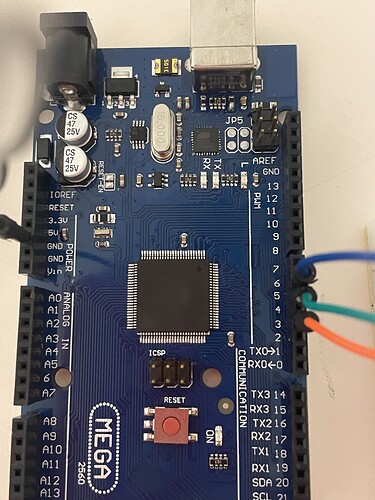Today I made the tutorial "Read ASCII String"(see url below)
I wrote everything of the code that was standing in the tutorial web page (see url above). The RGB LED didn't went on. Was that the intention because I imaged that it would go on?
Here is the code:
/*
Reading a serial ASCII-encoded string.
This sketch demonstrates the Serial parseInt() function.
It looks for an ASCII string of comma-separated values.
It parses them into ints, and uses those to fade an RGB LED.
Circuit: Common-Cathode RGB LED wired like so:
- red anode: digital pin 3
- green anode: digital pin 5
- blue anode: digital pin 6
- cathode: GND
created 13 Apr 2012
by Tom Igoe
modified 14 Mar 2016
by Arturo Guadalupi
This example code is in the public domain.
*/
// pins for the LEDs: <<<<<<<<<<< aanpassen!!!
const int redPin = 3;
const int greenPin = 5;
const int bluePin = 6;
void setup()
{
// initialize serial
Serial.begin(9600);
// make the pins outputs:
pinMode(redPin, OUTPUT);
pinMode(greenPin, OUTPUT);
pinMode(bluePin, OUTPUT);
}
void loop()
{
// if there's any serial available, read it:
while(Serial.available() > 0)
{
// look for the next valid integer in the incoming serial stream:
int red = Serial.parseInt();
// do it again:
int green = Serial.parseInt();
// do it again:
int blue = Serial.parseInt();
//look for the newline. That's the end of yur sentence:
if(Serial.read() == '\n')
{
// constrain the values to 0 - 255 and invert
// if you're using a common-cathode LED, just use "constrain(color, 0, 255);"
red = 255 - constrain(red, 0, 255);
green = 255 - constrain(green, 0, 255);
blue = 255 - constrain(blue, 0, 255);
// fade the red, green and blue legs of the LED
analogWrite(redPin, red);
analogWrite(greenPin, green);
analogWrite(bluePin, blue);
// print the three numbers in one string as hexadecimal:
Serial.print(red, HEX);
Serial.print(green, HEX);
Serial.print(blue, HEX);
}
}
}
I am new in programming ArduinoCode for a circuit.







